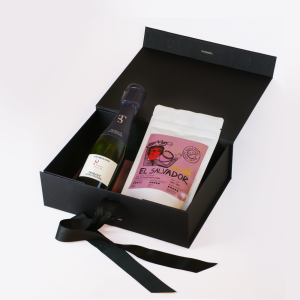
What acids are we talking about? In its pure state, green coffee contains a lot of different acids — good ones and bad ones. Some go away in the roasting process and others don’t, so roasting is all about finding the right balance in terms of acidity, aroma, and body.
You go to your local café to buy speciality coffee beans and then the barista asks you “What sort of acidy do you enjoy the most in your coffee?” with a sparkle in their eyes. Is it fresh? Is it fruity? Is it pleasant? And after that question you’re confused. The more you pay attention to the acidity in the coffee, the more you notice that there is a big difference between the aggressive sour taste that has already spoiled your coffee enjoyment and the fresh acids that can make coffee taste so special. It is no different with coffee than with other drinks or fruits. There are apples, for example, from green sour, which makes everything in your mouth contract, to pulpy papery without any acidity. Think for a moment what your favourite apple tastes like. Take Granny Smith, for example – with a fresh, invigorating acidity and at the same time pleasantly (but not too) sweet.
On the scientific side, acidity is something to be measured on the pH scale, which uses 7.0 as an indicator of neutrality, numbers under 7 as more acidic and numbers above 7 as less acidic (or basic). Lemon juice registers at about 2.0; milk at 6.5. A typical higher-acid breakfast blend coffee might land somewhere around 4.7. (Note that black coffee is marked on the scale below as a 5; this is an average and certainly not universal)
Lately, more and more coffee drinkers are starting to look for low-acid coffees, usually because of a doctor’s recommendation or simply a yucky feeling in their stomach after drinking their daily cup. pH level doesn’t always equate directly to a person’s experience of a particular coffee. Luckily, though, there are other ways to identify coffees that are low-acid.
Treating the beans or dumping antacid compounds into them, or dark roasting them to the limit of possibility, is not nearly as effective in producing a fine flavourful low-acid cup as finding a lower grown coffee with naturally low acidity that has been picked and processed with care and brought to a moderate roast that develops the sugars without burning them. Dark roasting reduces acidity, but it can also mask origin profiles—so it is important to consider the origin qualities of the green beans before roasting the heck out of them. Some coffees with robust, burly flavour qualities like dark chocolate and earthiness can hold up to a darker roast and still let those qualities shine through. But more delicate qualities of arabica bean – like citrus, berry, or herbal notes, are likely to disappear behind the qualities of the roast itself.
Cold-brewing extracts considerably less of everything from coffees, including acids, so that’s definitely an option. Many enjoy the sweet smoothness of cold brew. Choosing a milk-based espresso drink like a latte or cappuccino is another great way to enjoy a little coffee without irritating a sensitive stomach.
WHAT ACIDS ARE THERE IN COFFEE?
What acids are we talking about? In its pure state, green coffee contains a lot of different acids — good ones and bad ones. Some go away in the roasting process and others don’t, so roasting is all about finding the right balance in terms of acidity, aroma, and body.
CHLOROGENIC ACIDS
One of the main group of acids in question is chlorogenic acids, which happen to be antioxidants. These acids break down during the roasting process, which is why the longer and darker that a coffee is roasted, the lower the perceived acidity tends to be when that coffee is brewed and tasted.
If you look at a graph of different coffee roasting levels, you will see that the darker the roast, the lower the levels of chlorogenic acid. This is why a lot of the lighter roasted coffees that are popular these days have a more pronounced acidity in their flavour profile.
In its green state, coffee has a very large concentration of chlorogenic acid compared to other plants, which is why some people get so excited talking about the antioxidant levels of coffee (even though the overall antioxidant effect of coffee is still being researched), and arabica has a lower concentration than robusta.
QUINIC ACIDS
There’s another group of acids that plays an important role in coffee: quinic acids. As the coffee is roasted, the chlorogenic acids degrade and form quinic acids. These acids are the ones that affect the astringency of a drink, causing people to feel that sour sensation in their stomach when they drink coffee. Dark roasted coffees are high in quinic acid, but low in some of the other acids responsible for flavour.
Used materials:
https://roastrebels.com/en/roasting-knowledge/about-coffee/acidity-in-coffee
https://www.highergroundstrading.com/blogs/news/coffee-acidity
https://www.thekitchn.com/whats-the-deal-with-acid-in-coffee-224482
https://www.highergroundstrading.com/blogs/news/coffee-acidity
